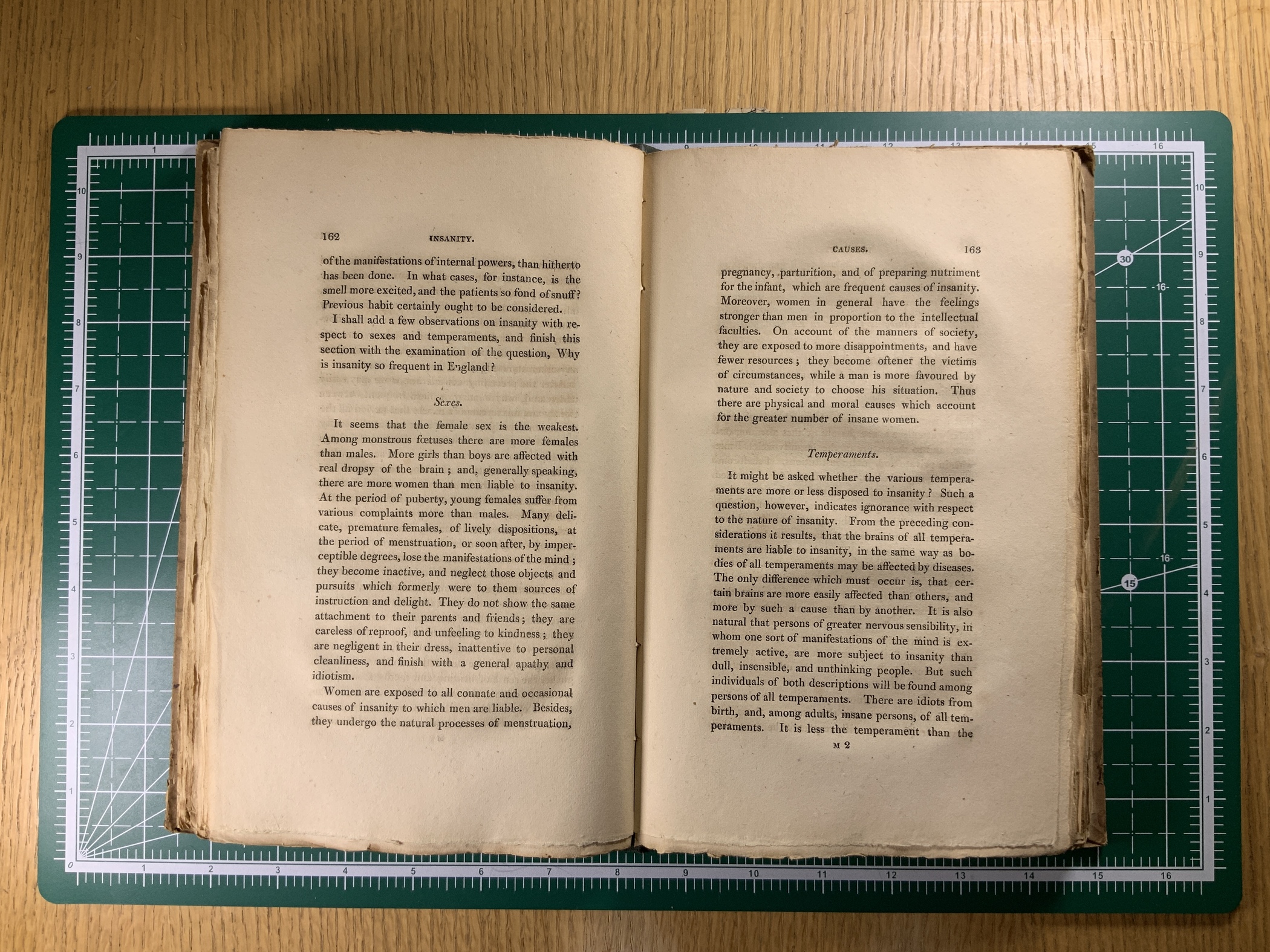Contextualizing the Epidemic: Hysteria in Time and Space
The nineteenth-century standardization of medicine into biomedicine is presumed by medical anthropologists to have been driven by the Enlightenment-era practice of codifying scientific knowledge into objective fact. This change involved the development of the medical gaze, a de facto male gaze because only men were permitted to practice biomedicine As Michel Foucault documents in his Birth of the Clinic, the medical gaze reduced patients to collections of symptoms, and viewed the physical body as the source of those ailments¹. This trend is evidenced by the medical teaching of the 19th century. For example, medical student Thomas Chadbourne points to the “uterine system” and “mind” as the roots of hysteria in his notes from lecturer Dr. Smith in 1816.
The male medical gaze defined the concept of a normal body within the new field of biomedicine. In their book An Anthropology of Biomedicine, Margaret Lock and Vinh-Kim Nguyen write that this development led to an individual’s health coming to be judged based on comparisons between their body and the ideal normal body. They further argue that because normal has a distinct moral quality, as normal became conflated with healthy, health also came to indicate morality². The closer a body was to the norm, the closer a patient was to how they ought to be. Experiences outside of the norm were coded as symptoms, and bodies outside of the norm were coded as ill.
So what body was the normal body? The healthiest, the most moral body? Nguyen and Lock write that “there is no way to define a biological norm or deviations from that norm without reference to specific populations”². To what population did the normal body belong? In the nineteenth century, morality was inextricably bound up in gender, as women carried with them the legacy of Eve’s infamous immorality. Male was ideal, and for that reason, the male body was the normal body against which all patients were juxtaposed regardless of whether or not they were gendered male.
Women’s bodies were compared to the male norm, so their experiences often fell outside of what was considered “normal.” This resulted in natural female processes such as menstruation, menopause, and hormonal fluctuations becoming coded as abnormal and therefore pathological. For example, Dr. J.G. Spurzheim references “menstruation, pregnancy, parturition, and preparing nutriment for the infant” as causes of female insanity in his 1817 Observations on the Deranged Manifestations of the Mind, or Insanity. As female experiences were increasingly coded as symptoms, the hysteria epidemic was born.
In the following pages, we highlight specific instances in which the female body and mind became pathological as the medical gaze deemed them to be inherently abnormal.

